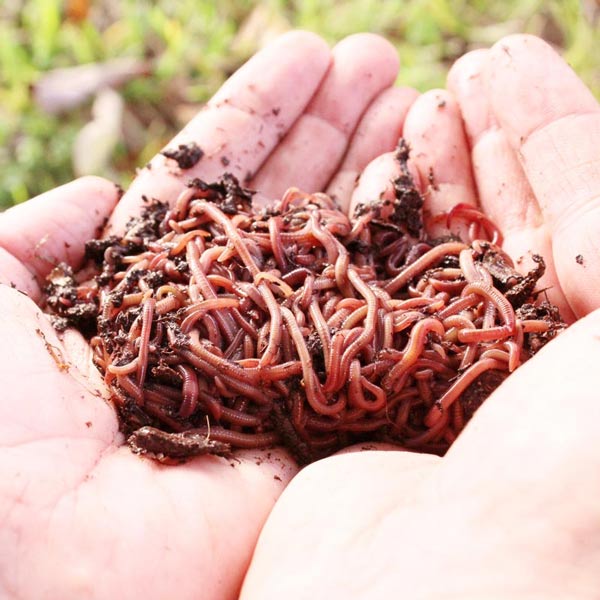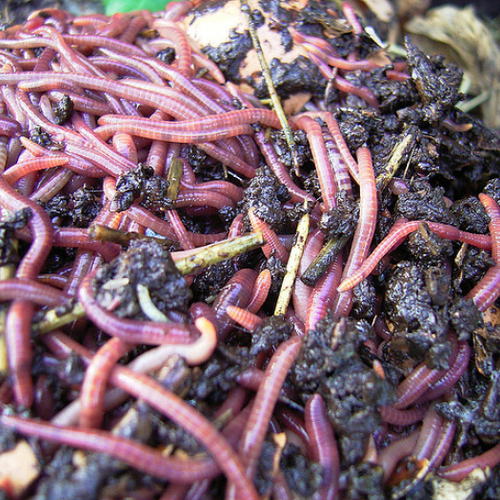Eco-friendly red wigglers: For organic gardening
Eco-friendly red wigglers: For organic gardening
Blog Article
The Function of Red Wigglers in Lasting Gardening
The combination of red wigglers right into sustainable horticulture methods supplies an engaging approach to improving dirt health and wellness and lowering natural waste. The effects of making use of red wigglers prolong beyond plain composting; their duty in forming a more sustainable future warrants a deeper expedition of their benefits and functional applications.
Understanding Red Wigglers
Red wigglers, scientifically understood as Eisenia fetida, are a species of earthworm renowned for their function in lasting horticulture and composting practices - red wigglers. These worms grow in disintegrating organic issue, making them specifically efficient in transforming cooking area scraps and yard waste right into nutrient-rich garden compost. Unlike standard earthworms, red wigglers have a higher resistance for varying dampness levels and can prosper in environments with abundant natural product
(Raleigh Worm Farms)Typically, red wigglers are smaller sized than their earthworm equivalents, generally measuring in between 3 to 4 inches in size. They have a reddish-brown coloration and have a fractional body framework that aids in their burrowing and feeding activities. These microorganisms are hermaphroditic, implying each private possesses both male and women reproductive organs, which permits efficient populace development under optimal conditions.
The habitat choices of red wigglers consist of damp, dark atmospheres abundant in organic material, such as garden compost bins or worm ranches. Their ecological role expands beyond composting; they are indispensable in freshening the dirt and promoting nutrition biking, which ultimately adds to healthier garden communities. red wigglers. Recognizing the biology and habits of red wigglers is vital for those looking for to execute effective vermicomposting in sustainable gardening
Benefits of Vermicomposting
Vermicomposting deals many advantages that enhance lasting horticulture techniques and add to ecological health and wellness. Among the main benefits is the transformation of natural waste right into nutrient-rich compost, which enhances soil structure and fertility. The spreadings created by red wigglers are loaded with valuable microbes and important nutrients, making them an outstanding all-natural plant food.
Furthermore, vermicomposting dramatically reduces garbage dump waste. By drawing away cooking area scraps and yard waste from land fills, this technique not only lessens methane discharges-- a powerful greenhouse gas-- however also promotes a circular economy, where waste is repurposed as a resource.
One more benefit is the improvement of soil aeration and drain (red wigglers). The burrowing task of red wigglers develops networks in the dirt, allowing air and water to pass through even more conveniently, therefore promoting a healthier root system for plants
Additionally, vermicomposting can be done on a little scale, making it accessible for metropolitan gardeners and those with limited room. This technique urges ecological stewardship and awareness, as people become a lot more engaged with their waste management techniques. Ultimately, vermicomposting stands for a lasting, effective, and environment-friendly strategy to horticulture that profits both plants and the planet.
How to Beginning Vermicomposting
Beginning your very own vermicomposting system can be a gratifying undertaking that improves your lasting gardening practices. To begin, pick an appropriate container, such as a plastic bin or wooden box, with great drain and ventilation. The dimension will certainly depend upon the volume of kitchen area scraps you create; a bin of 10-14 gallons normally is adequate for a household.
Following, prepare the bedding product. Shredded newspaper, cardboard, and coconut coir are superb options, giving a comfy habitat for the red wigglers. Goal for a bed linen deepness of about 4-6 inches, which need to be moist but not soggy.
When the bed linens is developed, present your worms. Red wigglers (Eisenia fetida) are one of the most ideal for composting. Begin with about one extra pound of worms for every single 2-3 pounds Raleigh Worm Farms of kitchen scraps weekly.
Begin adding kitchen waste, avoiding meat, dairy, and oily foods, as these can attract pests and create smells. Frequently monitor the bin's dampness degrees and temperature, guaranteeing it continues to be within the ideal range for worm task. With these initial actions, you'll be well on your method to developing nutrient-rich compost for your yard.
Preserving a Healthy Worm Bin
A growing worm container needs constant care and attention to preserve an optimum setting for the red wigglers. Secret variables to keep track of consist of moisture levels, temperature, and food supply. Maintaining a wetness level comparable to a wrung-out sponge is crucial; too much water can bring about anaerobic problems, while inadequate can dehydrate the worms.
Temperature is also important, as red wigglers flourish in a variety of 55 to 77 degrees Fahrenheit. Severe temperature levels can emphasize the worms, possibly leading to death. Therefore, putting the bin in a climate-controlled area or utilizing protecting products can assist manage temperature level changes.

Last but not least, oygenation is crucial. Consistently turning the bed linen and using a fork or shovel can avoid compaction and advertise air flow, making sure a healthy and balanced, flourishing atmosphere for the red wigglers. By sticking to these techniques, garden enthusiasts can keep an efficient worm bin that supports lasting horticulture initiatives.
Influence On Soil Health
Enhancing soil health and wellness through making use of red wigglers is a fundamental aspect of sustainable horticulture. These worms, understood medically as Eisenia fetida, play a vital duty in improving dirt framework and fertility. By taking in natural issue, red wigglers break down complex products into less complex compounds, a procedure known as vermicomposting. Completion product, worm spreadings, is abundant in vital nutrients, including nitrogen, phosphorus, and potassium, which are crucial for plant development.

(NC Worm Farms)Research studies have shown that soils enriched with worm castings display enhanced microbial activity and improved fertility, causing greater plant returns. By integrating red wigglers right into horticulture practices, gardeners not just improve their dirt but likewise add to a more sustainable farming system, highlighting the interconnectedness of soil wellness and environmental stewardship.

Verdict
In final thought, red wigglers dramatically contribute to sustainable horticulture through their reliable vermicomposting practices. By advertising waste reduction and cultivating a round economic climate, red wigglers emerge as important elements in environment-friendly horticulture efforts, highlighting their crucial duty in environmental sustainability.
Report this page